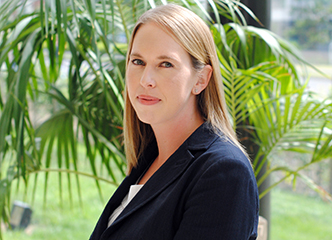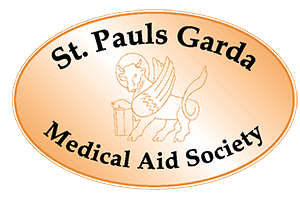Watch this video of Ms Ruth Delaney Consultant Orthopaedic Surgeon at UPMC Sports Surgery Clinic, discuss ‘Skiing & Shoulder Injuries’.
This video was recorded as part of UPMC Sports Surgery Clinic’s Online Public Information Meeting, focusing on preventing and managing Skiing injuries.

Ms. Ruth Delaney is a consultant orthopaedic surgeon and shoulder specialist. Ms. Delaney specializes in the full range of shoulder surgery, including open and arthroscopic procedures.
My name is Ruth Delany I’m a shoulder specialist and I’m going to be talking about some aspects of skiing injuries that have to do with shoulders. Before you even get to the mountains and get to ski there are probably some things you can do that might help in terms of being in the best possible shape for skiing and possibly even preventing injury as well. So before leaving home if you have a reasonable level of fitness that is going to help you enjoy your skiing more and hopefully keep you out of trouble in terms of injuries probably more so for the legs and for the shoulders and arms but I think overall conditioning can play a role and while you’re out there in the mountains there are some things you can think of that we often forget that may help you as well.
Some things that I’ve used and had fun with preparing for skiing can be gym stuff even just going for a run, running hills and some ski specific things there are apps like perfect turns there are ski specific machines lateral trainers, like skiers edge there’s lots of things you can do you can get really into it but I think the bottom line is if you are reasonably prepared then you’ll have a better time skiing.
When you get there remember that you’re probably going to be at a much higher altitude than we’re used to being at here in Ireland our highest mountain is probably only about a thousand meters and many of the ski resorts that we go to you’re sleeping at an altitude that’s higher than that and during the day going up to you know higher than 2,000 meters often and so hydration is relevant especially when we want to maybe go have a good time people like to have some drinks at some point and again just remembering to drink some water you may feel a whole lot better. Warming up is something that we often don’t really think about both you know tumbling out the door in the morning and just making it on time to wherever you want to get going with your day without actually doing any warm-up before you start or warming up your first run or two not going hell for leather immediately. At the other end of the day being careful of fatigue I think a lot of people are probably aware of this you know that last run syndrome where you try and push one more run or you ski down something that’s really difficult at a horrible time of day when everybody else has been on it as well and so finding an easier way home or maybe even taking a gondola down can sometimes save you and leave you in better shape for the next day. We also see injuries that don’t happen necessarily on skis or on snowboard but maybe around a resort where there’s really icy foot paths and so being kind of aware that injuries sometimes happen not necessarily during the activity, slippery foot baths and maybe slippery bar tables too so I definitely have fixed some injuries to do with après run rather than to do with skiing.
So how about if you have a shoulder injury already or a shoulder problem and you’ve got some plans to head out skiing or snowboarding can you go and what sort of things might you want to think about. So I think you know with the shoulder there can be structural injuries or inflammatory and wear and tear problems and sometimes it’s a mixture of both and so what we tend to think about is well what’s the likelihood of your skiing making it worse, most things pretty unlikely because the shoulders aren’t taking that much of a beating when you’re skiing with inflammatory problems like tendonitis, versitis things that maybe have to do a little bit with and tear it’s perfectly reasonable to have taken some anti-inflammatories or even potentially have had an injection if the appropriate specialist has recommended it and carry on with your activity. With structural problems let’s say you’ve got a full thickness rotator cuff tear something like this you know you’ve got to weigh it up you may find that it’s pretty sore and ruins your enjoyment of skiing you may find that it’s manageable, if you fall on it you may make it worse but if you fall on your shoulder you may get a new injury anyway so for a lot of things you can tend to work around them in the shoulder which may be unlike other joints. Obviously it’s a different situation if you’ve had surgery on your shoulder then it depends where you are in your rehab and what the timelines are like and you’ve got to talk to your surgeon and not take any unnecessary risks in terms of trying to push timelines just to squeeze in a trip maybe you’ve got to save it for next season.
Then if something happens what sort of things do we see in the shoulders and how do we take care of them? The obvious one is fractures the types of fractures that we tend to see from ski injuries would be mostly collar bone and shoulder fractures being the top of the humorous bone, Proximus humorous fractures and there can be a variety of different ways to manage these. Injuries happen in recreational skiers and they can happen in World Cup racers too, so this is a video of Graham Bell a British ski racer having a clavicle fracture in a downhill race in Kitzbuhel a few years ago and you can see exactly how this happened. So that was a clavicle fracture, ski racers being ski racers I think he was back racing a few weeks after that pretty quickly but for most of us it would take a little bit longer. What do we do with these clavicle fractures then many of them don’t need surgery and sometimes we see people coming home from their ski holiday having been told they needed an operation immediately that day, they’ve been taken off the mountain still in their sweaty ski gear taken to the hospital and taken right to theatre and most of the time that’s not necessary but people are scared, they’re hurt, they’re in a foreign country maybe don’t speak the language and a doctor is telling them they must do this and so the only time that it’s probably necessary to have an urgent operation on a broken collar bone is if it’s what we call an open fracture so if the bone is out through the skin then there’s a significant risk of infection and that needs to be taken care of typically within the first 24 hours that needs an operation. Everything else you can pause take a breath unless there’s nerve or blood vessel damage which is rare so if there’s a problem with the blood flow to the hand or something like that that’s another emergency these are really rare the vast majority of clavicle fractures don’t need to be fixed right there and then. Some of them actually don’t need to be fixed at all and sometimes we see people coming home from a ski trip with plate and screws on there that probably didn’t need to be put on at all and that’s all fine as long as everything goes well but if they run into trouble get an infection or something else then it’s really a shame that they’ve been exposed to unnecessary risk so I think just kind of taking a pause and asking you know well do I really need surgery right now or can this wait, can I go home first, is there an option to manage this injury non-operatively those are all totally reasonable questions to ask. Whether or not a clavicle fracture has surgery depends on some factors that we see on the X-ray like shortening displacement comminution which means lots of different pieces, the fractur in pieces and then other things like maybe if it’s your dominant side we might be more likely to consider fixing it and it’s going to be a discussion between you and the surgeon because there’s often no exact right answer there are risks to fixing it there’s a risk if you don’t fix it that it doesn’t heal and has a non-union and ends up need be fixed later anyway so it’s about balancing all of those things but typically that’s not something you have to decide on the spot.
The other fractures that we see would be broken shoulders so Proximus humorous fracture this is a friend and colleague of mine who had a really innocuous fall skiing he was just at one of those sort of junction points in the piece and waiting for one of his kids to catch up sort of turned around awkwardly and just fell over on his shoulder and had a really nasty proximal humorous fracture and so usually we’ll get a CT scan for these. Again, he was told out there in the mountains in another country oh you need an operation right away but you know he sent a few texts, sent a few pictures and he figured that he could get himself home first and then get taken care of by somebody who’s actually going to be available to follow him up. Again you can see on the other view of his CT scan as we’re scrolling through you can see how the top of the humorous bone is pretty smashed and he had his shoulder fixed by one of the trauma guys did a really nice job put that back together there absolutely perfectly but the problem with these injuries is that once you break the shoulder it’s never the same again, so unlike a collar bone which tends to heal without too many consequences for the shoulder because the shoulder joint’s not involved, once you have a fracture of the shoulder joint be at the top of the humorous or more rarely the socket or the glenoid part that can lead to problems later on no matter how well it’s treated to begin with and the issue here was that the blood supply to that head of the humorous that nice round part of the top was damaged in the initial injury and you can tell by certain features of the initial fracture that this is possibly going to happen but there’s nothing you can do about it, so then the head collapsed over time so now those perfectly placed screws are now prominent and potentially damaging the socket of the shoulder and there’s pain and so the next thing to do is then take the hardware out and he’s left with this shoulder so probably headed for a shoulder replacement at some point and unfortunately, that can just be a consequence of certain breaks of the top of the humorous bone not all of the some of them the blood supply doesn’t get damaged some heal pretty well but you’re often left with some stiffness of that shoulder if you’ve had a break into the shoulder joint.
This is another injury that looks maybe a little bit similar this is somebody who was just standing at the bottom kind of in the lift line waiting for her friends and somebody out of control just came flying down and smashed into her. She dislocated and fractured her shoulder was fixed out there in that country and they put plate and screws on got that head of the humorous sort of back and top of the humorous but didn’t really appreciate the extent of the injury so when she turned up in Dublin for follow up and you can see on the X-ray those sorts of diamond shaped things those are skin clips so it’s really soon after surgery her shoulder is dislocated because that’s where the socket of the shoulder is and you can see the humorous is in front of it and below it and so unfortunately, her injury hadn’t really been completely treated so I took it her to theatre and put it back in but it just sort of fell out again because of the extent of the damage the surrounding tendons of the rotator cuff. She was of an age where it was appropriate that she could have this type of replacement a reverse shoulder replacement so that’s what I did for her and it worked pretty well and she got to go back skiing. So we do let people ski again after shoulder replacements what you don’t want is for someone to fall and have a factor around their replacement so maybe a conversation about changing how they ski in terms of how much they push themselves or how aggressively they ski can sometimes be appropriate depending on the person but it’s not necessarily the end of skiing.
Speaking of dislocations, the more common situation where you just have a straight dislocation, where the humorous comes out of the socket. Like you see in this picture and this is another racer who recently dislocated her shoulder during a downhill she’s one of the best speed racers in the world finished the race and sounds like her shoulders come in and out quite a lot of times before there she is in the gym just a couple of days later but people who have these loose shoulders and tend to dislocate may often find that an innocuous force when they’re recreationally skiing can cause a dislocation. So the people that we think about doing surgery for dislocations are the people that either have a first time dislocation at quite a young age especially if they want to go back to a contact sport if they normally play something like rugby, Gaelic football then they’re a high risk for dislocating again or somebody who’s had multiple dislocations, there’ll usually be structural damage to the shoulder unless somebody has very stretchy ligaments so if the labral and the cartilage bumper around the socket of the shoulder is torn that can lead to further dislocation. So we might fix that as you see on the left with a keyhole surgery, if somebody’s got a bit more damage to the bone of the socket or a dent in the back of the humorous we way have to do a bone block or what we call a latarjet procedure so sometimes shoulder dislocations end up having surgery and it just depends on the situation in terms of how many times it’s dislocated and what are the damages. Physiotherapy is often the way that we treat a first-time dislocation when somebody comes back.
This is another ski racing injury this one from last year Alexander Omakilda had a shoulder dislocation in a downhill race going obviously at a lot more speed than most recreational skiers are going to be going at but his dislocation also was complicated by nerve injury and that can happen when you dislocate the shoulder you can stretch one or more of the nerves around the shoulder. Most of the time that will get better on its own and so whether surgery is indicated or not depends more on the dislocation itself and the other factors that we just spoke about but you can see how quickly these things can happen especially with downhill racers and he crashes into the netting has a significant leg injury as well where the ski edge actually cut his leg and injured a nerve there, his shoulder dislocated he did end up having surgery for that dislocation and that was again a decision that probably had multiple factors in it. These types of ski injuries are extreme but we do see recreational skiers dislocate their shoulders in more typical recreational falls as well there’s just usually no videoing them but you can just see the force involved and the collisions with the ground and with the safety netting.
Another type of shoulder injury that we can see sometimes is rotator cuff tear and believe it or not I have seen somebody who fell off a ski lift. The rotator cuff are four muscles that are deep inside the shoulder, the tendons attaching muscles to bone, the tendons of the rotator cuff don’t have a great blood supply so over time they tend to wear and degenerate anyway. So many people will have some wear in their rotator cuff and over the age of 65 about half the population will actually have full thickness tears but not all of them will have symptoms. If you have a fall you may have an acute rotator cuff tear from an intact tendon that suddenly tears or you may have an asymptomatic tear suddenly become symptomatic because it becomes larger and more difficult to compensate for. I’ve also seen a patient who managed to tear both rotator cuffs in one afternoon of skiing, skiing moguls with his teenage daughter, fell on one shoulder pretty hard knew he had hurt it and then didn’t want to lose face so continued to ski the bumps and next time he fell, didn’t want to fall on the shoulder he had just hurt so then fell on the other shoulder and presented to us with bilateral full thickness acute cuff tears both of which ended up needing surgery, so it can be a tough injury.
Not all rotator cuff tears need surgery typically the rule of thumb is over 70 the healing rates can be variable and a lot of people in that age group will have had the tear a long time anyway so we may try an injection and physiotherapy to get them back to the compensated state they were in before they fell. Obviously there’s not a hard and fast rule and I’ve dealt with 78 year olds, 82 year olds who are in amazing shape so it’s more to do with physiologic age than chronologic age but in acute full thickness tears in younger or very active people we usually would recommend repair and this is a keyhole surgery where we reattach the tendon to bone using anchors and heavy sutures. The tough part of that surgery is that it takes quite a lot of time to recover and rehab we’ve got to protect the repair in the beginning by putting you in a sling, we can’t allow any strengthening until about 12 weeks out from surgery so in real life day-to-day terms that means you can’t lift anything heavier than a cup of coffee for three months and that has implications not just for people’s recreation but for a lot of people’s work as well. It typically takes about 6 months to rehab from a cuff repair and people are often still improving up to a year so even though it’s a keyhole surgery there’s quite a bit involved but that’s something that can happen from any type of a fall including one on the mountain.
To sum up you know skiing is a fantastic sport is a great recreation it’s an amazing holiday, yes there can be an injury risk but I don’t think anybody should let that stop them from getting out there being active, experiencing the mountains. There are some things you can do to prepare and to try to prevent injury and maximize the enjoyment but if the worst happens then take a breath and assess the options this is not me touting for business we’re already incredibly busy it’s more I suppose from having seen some of the messes that we have to clean up sometimes when people come home just take a breath and find out your options before you get rushed into something. Either way if you have something fixed out in the mountains then you’re going to need follow up when you come home as well and we’re always happy to do that but I think the bottom line is getting out being active and enjoying skiing is far more beneficial than worrying about any of the risks of injury it’s about being outdoors having activity and of course it’s the people that you ski with as well.
Yeah I think it often is a situation where we would consider surgery for shoulder dislocation if somebody is under the age of 25 because we know that if you dislocate your shoulder for the first time under the age of 25 is a really high chance that it’s going to keep happening regardless of how much work you do with physio and how much you strengthen up the structures around the shoulder that help with stability things like the rotator cuff because usually you’ll have damaged the labarum or the cartilage bumper that helps stabilized at the socket of the shoulder. As you kind of get a bit older you are less likely to actually have recurrent dislocation whereas under the age of 25 you may have it happen again so we would have at least a conversation with you about surgery versus trying physio and only intervening after a second dislocation. So I think the bottom line is if you’re 20 years old and you’ve dislocated your shoulder it’s worth at least meeting with a shoulder surgeon and going through your options.
Yeah I suppose if you’ve had a fall that’s bad enough that you can’t pick yourself up and get yourself off the mountain then you probably should have an x-ray, so chances are steep patrol would be taking you off the mountain in the blood wagon or if it’s bad enough in a helicopter and you’re going to end up you know at a local hospital or clinic and I think you know having a basic assessment there to make sure that you don’t have something that’s truly urgent is very sensible. Then after is where it gets a little bit tricky there are a lot of things that can wait and so I think you know it’s no harm to ask the question you know well do I have to do something right now, if you’re being kind of pushed towards a surgery option that has to happen instantly that day you know, well does it can it wait till the morning I’d like to think about it and look at my options or is there an option to treat this without surgery that sort of thing so I think having an immediate basic assessment right there makes sense but then when it comes to definitive treatment options like surgery and things like that you know try to pause and take a breath it’s hard because people are hurt and they’re in a foreign country and maybe they don’t speak the language and things can be happening really fast but most shoulder injuries you know that need surgery can wait and a lot of times you know you can come home and have it at home if that’s what you prefer to do and there are sometimes advantages to doing that.
| For further information on Shoulder Surgery or to make an appointment with a UPMC Orthopaedic Consultant, please contact [email protected] |























